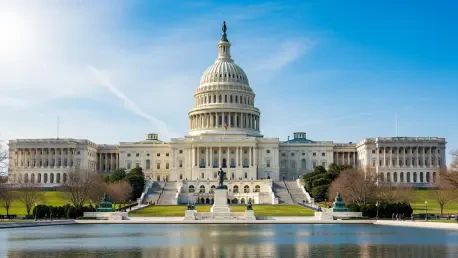The Federal Budgeting Process: An Overview
The federal budgeting process, established by the 1974 Congressional Budget Act, serves as the backbone of how the United States government allocates its financial resources each year. Designed to bring order and predictability to federal spending, this framework sets out a clear timeline for action, beginning with the president’s budget proposal submitted by the first Monday in February. This is followed by a congressional budget resolution, ideally adopted by April 15, which outlines broad fiscal priorities. The process culminates with the passage of appropriations bills to fund government operations by the start of the fiscal year on October 1.
Key stages in this cycle involve intricate coordination between the House, Senate, and executive branch, with the appropriations bills—typically 12 in number—detailing specific funding for agencies and programs. Adhering to the October 1 deadline is crucial to avoid disruptions in government services, yet this goal is rarely met. The significance of this deadline lies in ensuring continuity for everything from defense operations to public health initiatives, making timely budgeting a cornerstone of effective governance.
Federal spending itself is categorized into three main types: discretionary, mandatory, and net interest. Discretionary spending, controlled through annual appropriations, covers areas like education and transportation, representing about 26.8% of total outlays in the current fiscal framework. Mandatory spending, which includes programs like Social Security and Medicare, operates outside this process and accounts for over 60% of the budget, while net interest on the national debt fills the remainder. The appropriations process, though governing a minority of expenditures, plays a pivotal role in shaping national priorities and maintaining operational stability.
Historical Patterns of Delay in Congress
Chronic Failure to Meet Deadlines
Delays in passing appropriations bills have become a hallmark of congressional budgeting over nearly five decades. Since the current system’s inception in 1976, Congress has managed to enact all spending bills by the October 1 deadline in only four fiscal years: 1977, 1989, 1995, and 1997. This stark record underscores a systemic challenge in adhering to the structured timeline set forth by the 1974 legislation, revealing a pattern of procrastination that spans multiple administrations and political climates.
A primary trigger for these delays often lies in the initial step of adopting a budget resolution, a non-binding agreement meant to guide spending decisions. In 45 of the past 51 fiscal years, this resolution has either been passed late or not at all, disrupting the subsequent stages of crafting and approving individual appropriations. Without this fiscal blueprint in place by mid-April, lawmakers face an uphill battle to align priorities and finalize detailed funding plans before the fiscal year begins.
Impact of Delays on Governance
The consequences of missing these critical deadlines are measurable and significant. Since 1998, the average delay in enacting the final spending bill has stretched to 117 days beyond October 1, translating to nearly four months of uncertainty for federal operations. This lag disrupts planning for agencies reliant on annual funding, creating inefficiencies that ripple through government functions.
In extreme instances, such as the fiscal year 2017, the final appropriations bill was not signed into law until May, over seven months into the fiscal cycle. Such prolonged delays are not anomalies but part of a broader trend of missed deadlines that has persisted across nearly five decades. This chronic tardiness highlights a disconnect between the intended process and practical execution, often leaving critical programs in limbo as temporary measures are scrambled into place.
Procedural Crutches and Their Consequences
Congressional reliance on stopgap measures like continuing resolutions (CRs) has become a routine response to missed deadlines, preventing government shutdowns by temporarily extending prior-year funding levels. These short-term fixes allow operations to continue while negotiations drag on, but they also signal a departure from the deliberate, detailed budgeting envisioned in the original framework. Over time, CRs have shifted from emergency tools to standard practice, embedding delay into the system.
Another evolving tactic is the use of omnibus legislation, where multiple or all appropriations bills are bundled into a single, sprawling package, often passed well after the fiscal year begins. In 12 of the past 15 fiscal years, this approach has dominated, replacing the individual bill process with massive, often opaque legislation. While this method resolves gridlock in the short term, it sacrifices the granular oversight that separate bills provide, making it harder to scrutinize specific allocations.
The shift toward these practices has eroded transparency and accountability in federal budgeting. The subcommittee-driven process, meant to ensure thorough debate and specialization, is sidelined when decisions are centralized into omnibus packages or prolonged CRs. This trend undermines the public’s ability to track spending priorities and diminishes the structured governance the 1974 act sought to establish, raising questions about long-term fiscal discipline.
Political and Structural Barriers to Timely Budgeting
Systemic challenges within Congress contribute heavily to the persistent delays in passing spending bills. Political polarization stands as a major obstacle, with deep divisions between parties—and often within them—complicating consensus on fiscal priorities. When the House, Senate, and executive branch operate under competing agendas, aligning on even a single appropriations bill becomes a drawn-out battle, let alone all 12 required each year.
The complexity of negotiating these bills further exacerbates gridlock, as each covers distinct sectors like defense, health, or infrastructure, often tied to contentious policy debates. In a divided political environment, these negotiations are not merely financial but ideological, with lawmakers leveraging delays as bargaining chips. Procedural inefficiencies, such as Senate filibusters or protracted committee markups, add additional layers of delay, turning the process into a labyrinth of competing interests.
Addressing these barriers requires innovative reforms, though entrenched habits and partisan dynamics pose significant hurdles. Proposals like biennial budgeting, streamlined rules for debate, or stricter enforcement of deadlines have surfaced, but adoption remains elusive. Until structural and political impediments are tackled, the cycle of delay risks remaining a fixture of congressional operations, challenging the very foundation of timely governance.
Government Shutdowns and Broader Implications
When Congress fails to pass spending bills or temporary funding measures, the specter of government shutdowns emerges with tangible consequences. Since 1995, six notable shutdowns have occurred, with the 35-day closure from late 2018 to early 2019 standing out as the longest, costing an estimated $3 billion in economic output. These events disrupt essential services, furlough federal workers, and strain contractors dependent on government contracts.
The impact extends beyond economics to affect hundreds of thousands of employees and citizens reliant on discretionary programs, from national parks to housing assistance. Despite appropriations governing only about 26.8% of federal spending in the current fiscal data, the visibility of shutdowns amplifies their significance. Federal workers face unpaid periods, while public trust in government efficiency erodes with each instance of such visible dysfunction.
This reality underscores an urgent need for reform, even as mandatory spending—over 60% of the budget through programs like Social Security—remains untouched by these delays. The focus on discretionary funding, though a smaller slice of outlays, carries outsized political and operational weight. Without addressing the root causes of budgetary gridlock, the risk of future shutdowns looms as a persistent threat to stability and public confidence.
Looking Ahead: Prospects for Reform and Future Challenges
The future of congressional budgeting hinges on navigating a landscape of entrenched polarization and evolving political dynamics. As partisan divides deepen, the likelihood of replicating past successes, such as the timely passages in 1977 or 1995, appears slim without unified government control or bipartisan cooperation. Emerging pressures, from economic uncertainty to shifting national priorities, could further complicate an already strained process.
Legislative reforms, such as adjusting the fiscal calendar or imposing penalties for missed deadlines, offer potential pathways forward, though political will remains a barrier. Public attention to government efficiency may drive momentum for change, particularly as economic challenges heighten scrutiny of federal spending. Innovations in budgeting practices, including technology-driven transparency tools, could also reshape how lawmakers and citizens engage with the process.
Ultimately, the trajectory depends on whether systemic dysfunction is accepted as inevitable or challenged through deliberate action. While conditions for timely budgeting may occasionally align, the broader outlook suggests ongoing struggles unless structural reforms gain traction. The interplay of public demand, economic realities, and political incentives will likely define whether Congress can reclaim a disciplined approach to fiscal governance.
Final Thoughts
Reflecting on decades of congressional budgeting challenges reveals a persistent struggle rooted in systemic and political obstacles. Historical delays, reliance on temporary fixes, and the specter of government shutdowns paint a picture of a process far removed from its intended design under the 1974 framework. The erosion of transparency through omnibus bills and continuing resolutions further compounds the issue, sidelining the detailed oversight once envisioned.
Moving forward, actionable steps emerge as critical to breaking this cycle. Prioritizing bipartisan task forces to streamline procedural rules offers a starting point, while exploring biennial budgeting could reduce annual friction. Harnessing public pressure to demand accountability from lawmakers stands as another lever for change, ensuring that fiscal discipline regains prominence in governance debates. These strategies, if pursued with commitment, hold the potential to reshape a faltering system for future stability.









